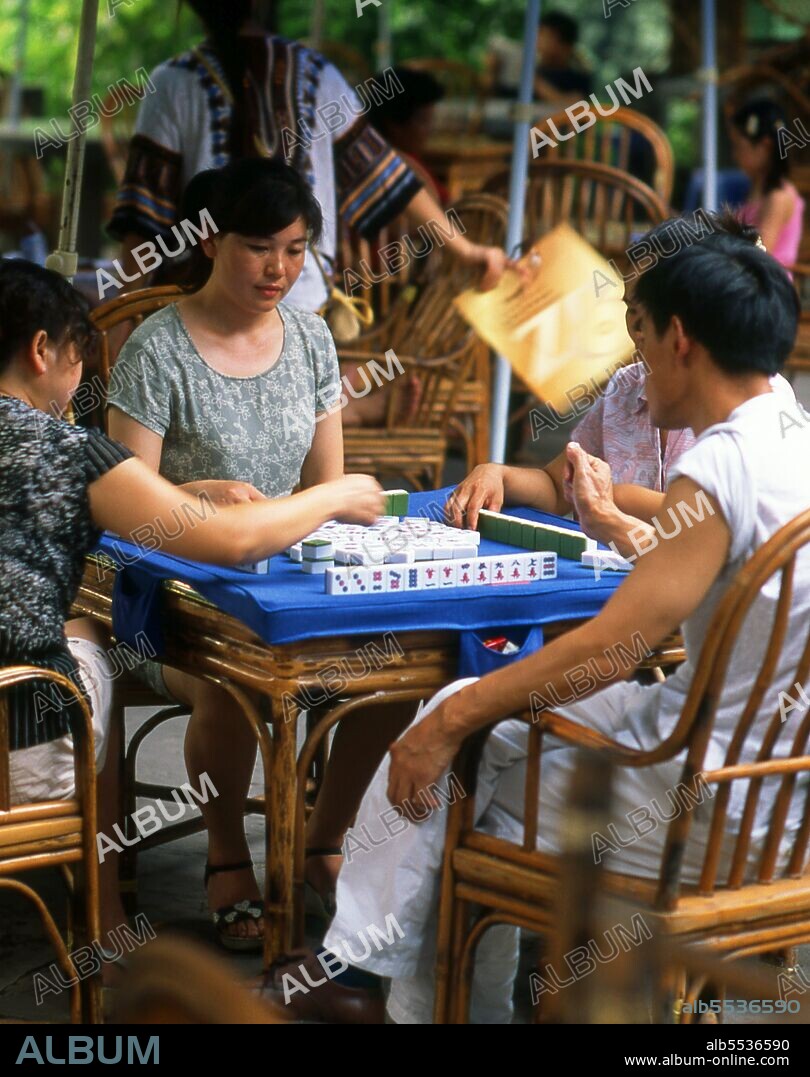alb5536590
China: Mah jong players in a tea house in Renmin Gongyuan (People's Park), Chengdu, Sichuan Province

|
Add to another lightbox |
|
Add to another lightbox |



Title:
China: Mah jong players in a tea house in Renmin Gongyuan (People's Park), Chengdu, Sichuan Province
Caption:
Mahjong is a game that originated in China, commonly played by four players (with some three-player variations found in Korea and Japan). Similar to the Western card game rummy, mahjong is a game of skill, strategy and calculation and involves a certain degree of chance. In Asia, mahjong is also popularly played as a gambling game (though it may just as easily be played recreationally). The game is played with a set of 136 tiles based on Chinese characters and symbols, although some regional variations use a different number of tiles. In most variations, each player begins by receiving thirteen tiles. In turn players draw and discard tiles until they complete a legal hand using the fourteenth drawn tile to form four groups (melds) and a pair (head). There are fairly standard rules about how a piece is drawn, stolen from another player (melded), the use of basic (numbered tiles) and honours (winds and dragons), the kinds of melds, and the order of dealing and play. However there are many regional variations in the rules; in addition, the scoring system, the minimum hand necessary to win varies significantly based on the local rules being used.
Credit:
Album / Pictures From History/Universal Images Group
Releases:
Model: No - Property: No
Rights questions?
Rights questions?
Image size:
3461 x 4374 px | 43.3 MB
Print size:
29.3 x 37.0 cm | 11.5 x 14.6 in (300 dpi)
Keywords:
ASIA IMAGES • ASIA PICTURES • ASIA • ASIAN IMAGE • ASIAN IMAGES • ASIAN PICTURES • ASIAN • BAR PARLOR • BAR PARLOUR • BEVERAGE • BEVERAGES • CHENGDU • CHINA • CHINE • CHINESE • DAVID HENLEY • DRINK • DRINKING • FOOD • FOODSTUFFS • GAME • GAMES • HISTORIA UNIVERSAL • HISTORIA • HISTORICAL IMAGES • HISTORICAL PICTURES • HISTORICAL • HISTORY IMAGES • HISTORY PICTURES • HISTORY • INFUSION • MAH JONG • MAH JONGG • MAHJONG • PASTIMES • PORCELAIN • RESTAURANT • SICHUAN • SICHUANESE • TEA HOUSE • TEA • TEAHOUSE
 Pinterest
Pinterest Twitter
Twitter Facebook
Facebook Copy link
Copy link Email
Email

